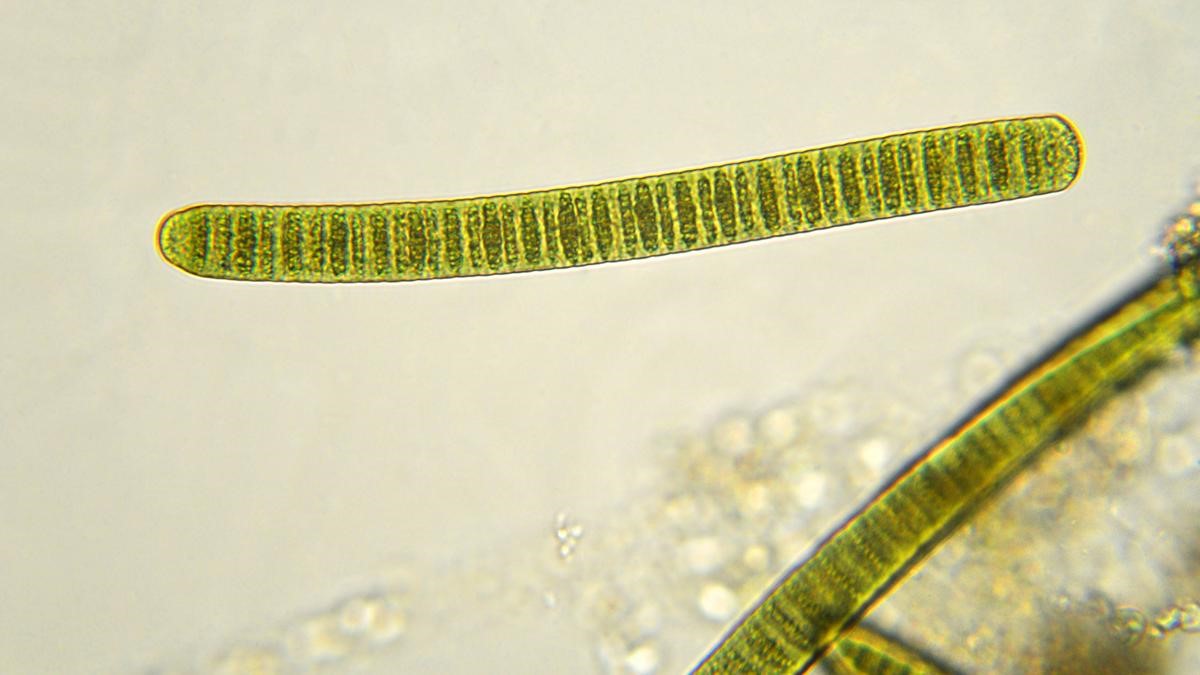ENDOSYMBIOTIC THEORY

Source: Hindu
Disclaimer: Copyright infringement not intended.
Context
- Recent papers in Science and Cell highlight a new discovery related to nitrogen fixation, a crucial process for plant growth and ecosystem functioning.
- The recent discovery extends beyond mitochondria and chloroplasts, revealing a new organelle involved in nitrogen fixation, termed nitroplast.
Details
- Nitroplasts co-evolved with their host cells, similar to other organelles, and demonstrate integration into cellular functions and architecture.
- Nitroplasts meet key criteria for organelles, including integration with host cell functions, protein import from the host cell, synchronization with host cell growth, and inheritance during cell division.
- While nitroplasts' genetic material loss and migration to the host cell nucleus require further investigation, nearly half of their proteins originate from the host cell.
- The discovery holds revolutionary implications for agriculture, offering a potential solution to the harmful effects of industrial ammonia production.
- Biotechnological applications may include engineering host cells and nitroplasts for efficient nitrogen fixation, introducing nitroplasts into plant cells, and transforming organelles in plant cells to enable nitrogen fixation.
- Future research will focus on understanding the genetic and molecular mechanisms underlying nitroplast function and integration into plant cells.
Nitrogen Fixation and Nitrogen-Fixing Bacteria
- Nitrogen is an essential element for all living organisms, crucial for the synthesis of proteins, DNA, and other biomolecules.
- However, atmospheric nitrogen (N₂) is inert and cannot be directly utilized by most organisms.
The Process of Nitrogen Fixation:
- Nitrogen fixation is the conversion of atmospheric nitrogen (N₂) into ammonia (NH₃) or other nitrogen compounds that can be assimilated by plants.
- This process is carried out by nitrogen-fixing bacteria and archaea, which possess the enzyme nitrogenase.
Types of Nitrogen Fixation:
- Biological nitrogen fixation occurs in two main forms: symbiotic and nonsymbiotic.
- Symbiotic nitrogen fixation involves mutualistic relationships between nitrogen-fixing bacteria and host plants, such as legumes.
- Nonsymbiotic nitrogen fixation occurs in free-living bacteria and archaea, contributing to nitrogen cycling in soil and aquatic ecosystems.
Role of Nitrogen-Fixing Bacteria:
- Nitrogen-fixing bacteria play a critical role in providing bioavailable nitrogen to ecosystems.
- They form symbiotic associations with plants, such as legumes, where they colonize root nodules and convert atmospheric nitrogen into ammonia, benefiting both the bacteria and the host plant.
Mechanisms of Nitrogen Fixation:
- Nitrogen fixation requires the enzyme nitrogenase, which catalyzes the conversion of atmospheric nitrogen to ammonia.
- This process is energetically demanding and requires ATP and reducing equivalents to drive the reduction of N₂ to NH₃.
Examples of Nitrogen-Fixing Bacteria:
- Rhizobium: Forms symbiotic associations with leguminous plants.
- Azotobacter: Free-living soil bacteria capable of nitrogen fixation.
- Cyanobacteria: Photosynthetic bacteria that fix nitrogen and play a vital role in aquatic ecosystems.
- Frankia: Forms symbiotic associations with actinorhizal plants, such as alders and elms.
About Endosymbiotic Theory
- The endosymbiotic theory proposes an evolutionary mechanism for the origin of eukaryotic cells, which are characterized by membrane-bound organelles such as mitochondria and chloroplasts.
- First proposed by biologist Lynn Margulis in the 1960s, the theory suggests that mitochondria and chloroplasts originated as free-living prokaryotic organisms that were engulfed by primitive eukaryotic cells.
Key Concepts of Endosymbiotic Theory:
- Origin of Mitochondria and Chloroplasts: According to the theory, mitochondria and chloroplasts were once independent prokaryotic organisms—likely bacteria—capable of aerobic respiration and photosynthesis, respectively.
- Endosymbiosis: The engulfment of these prokaryotic cells by a larger host cell led to a symbiotic relationship, where the engulfed cells survived and replicated within the host cell.
- Integration into Eukaryotic Cells: Over time, the engulfed prokaryotes became integrated into the host cell, losing many genes to the nucleus of the host while retaining some of their own genetic material.
- Genetic Evidence: Mitochondria and chloroplasts contain their own circular DNA, similar to bacterial DNA, and replicate independently of the host cell. Additionally, they possess ribosomes and produce proteins similar to those found in bacteria.
- Organelle Structure: The double membrane structure of mitochondria and chloroplasts supports the theory, as it suggests that these organelles originated from the engulfment of a prokaryotic cell by a eukaryotic ancestor.
Significance:
- Evolution of Eukaryotic Cells: The endosymbiotic theory provides a compelling explanation for the evolution of eukaryotic cells from prokaryotic ancestors, marking a crucial milestone in the history of life on Earth.
- Biological Diversity: The acquisition of mitochondria and chloroplasts through endosymbiosis facilitated the development of complex multicellular organisms and contributed to the diversity of life forms on the planet.
- Medical and Biotechnological Applications: Understanding the evolutionary origins of eukaryotic cells has important implications for fields such as medicine and biotechnology, providing insights into cellular processes and disease mechanisms.
Must read articles:
Sources:
|
PRACTICE QUESTION Q. Nitrogen fixation is crucial for maintaining soil fertility and ecosystem productivity. Comment. (150 words) |




1.png)
